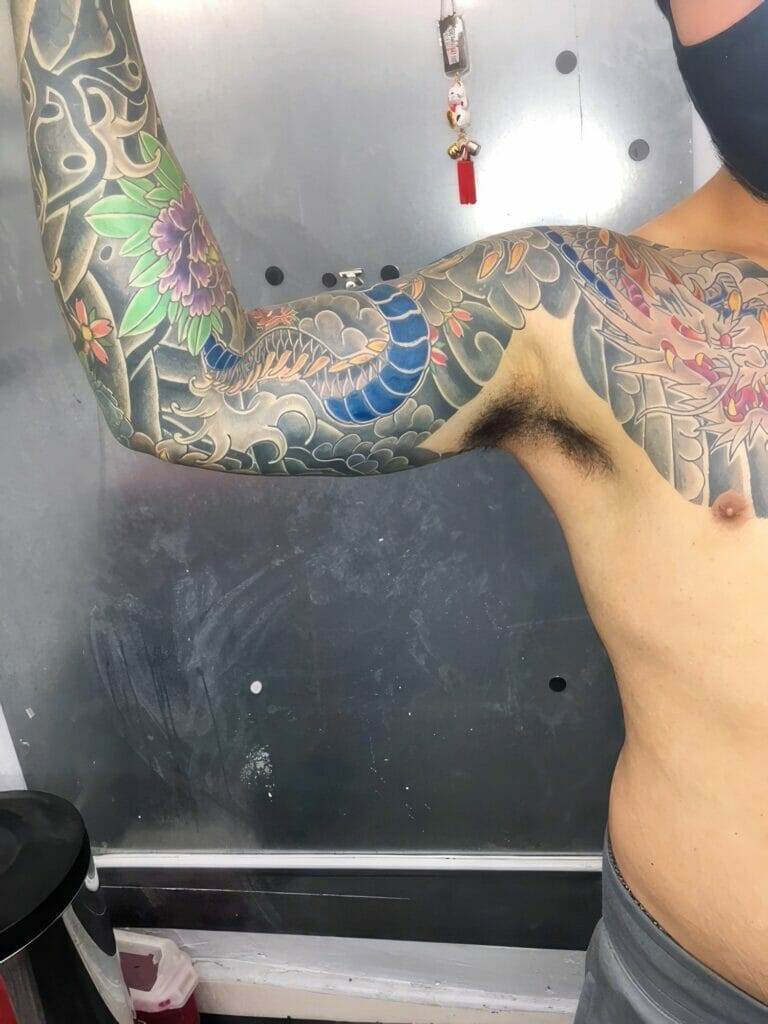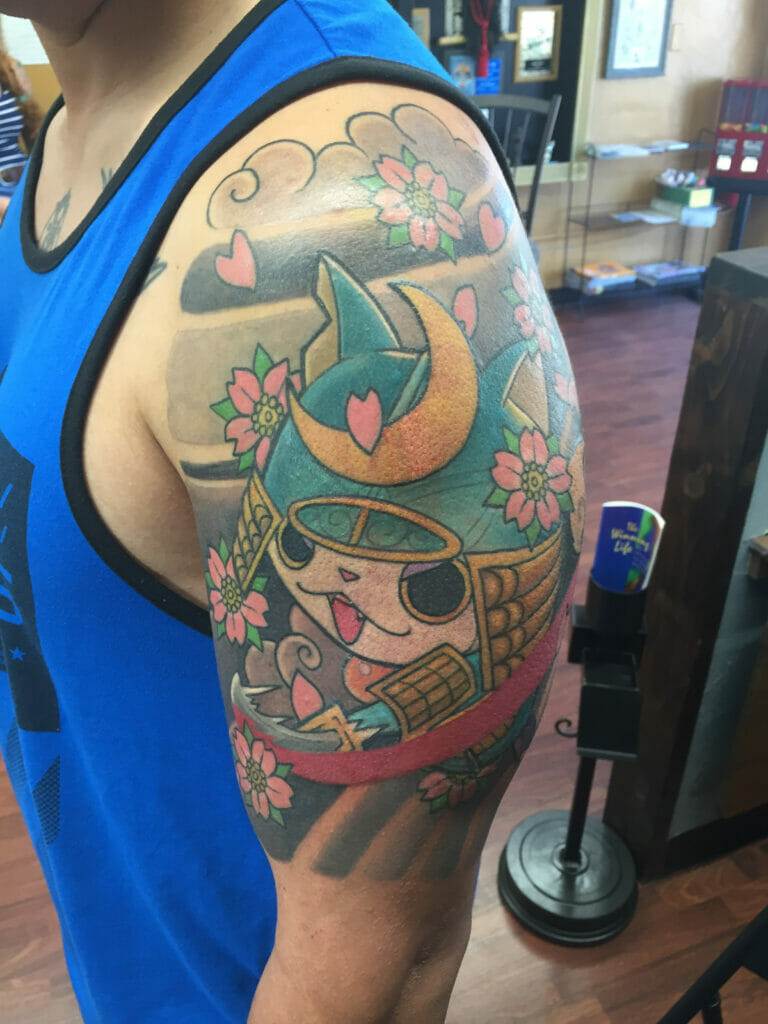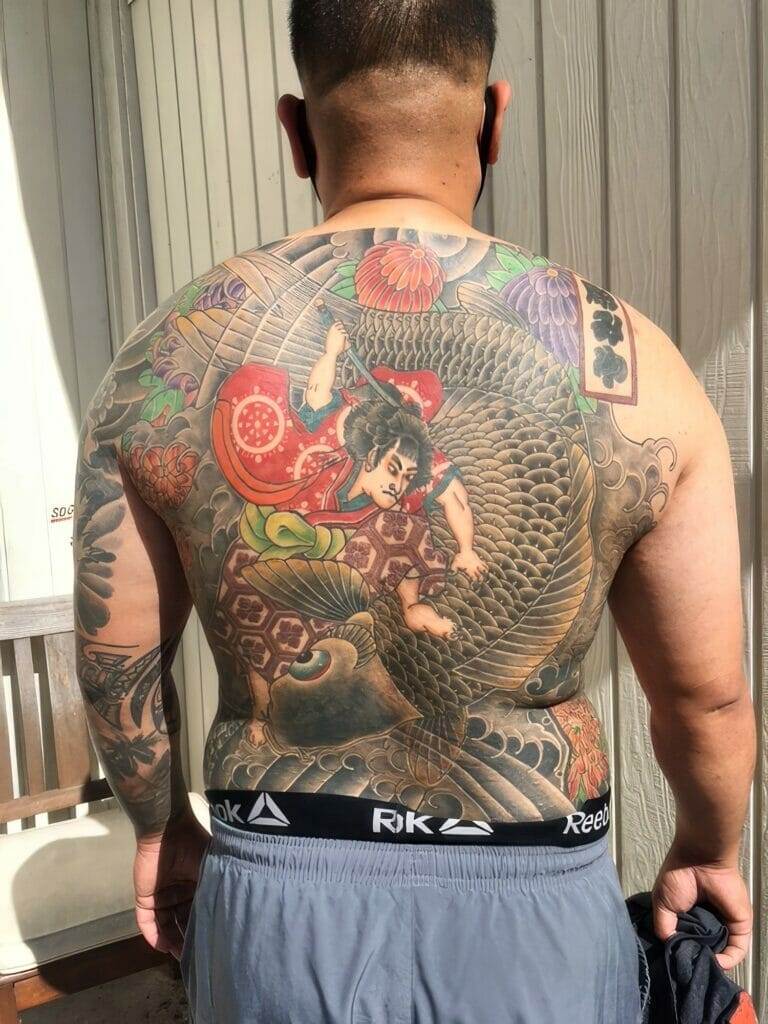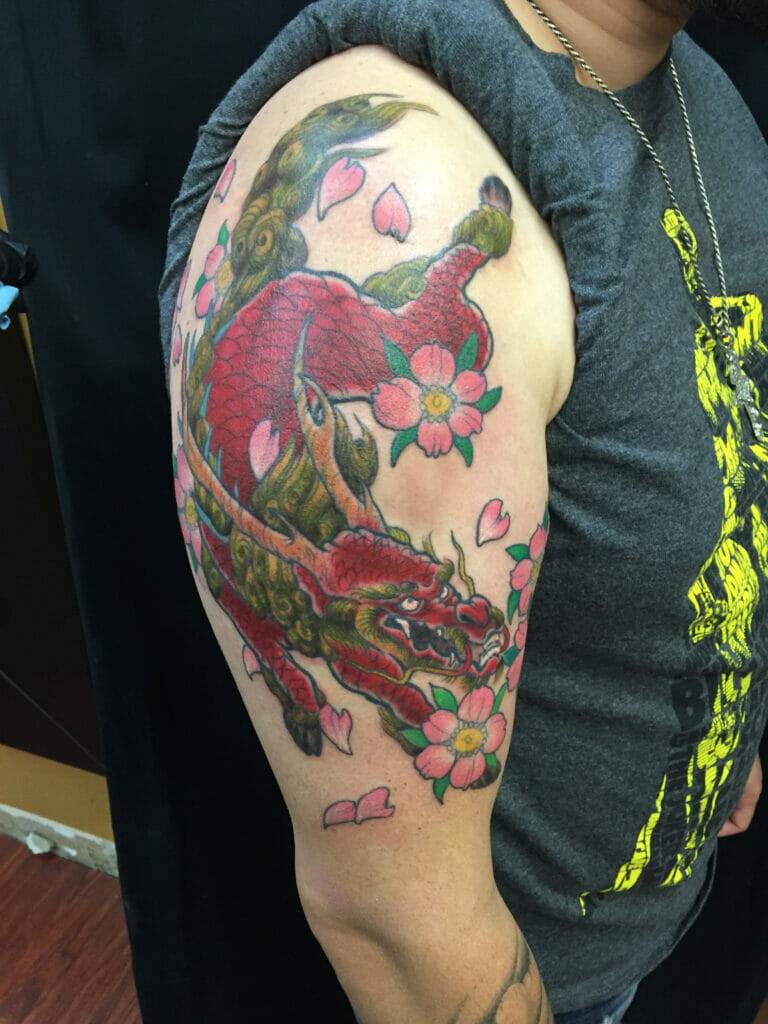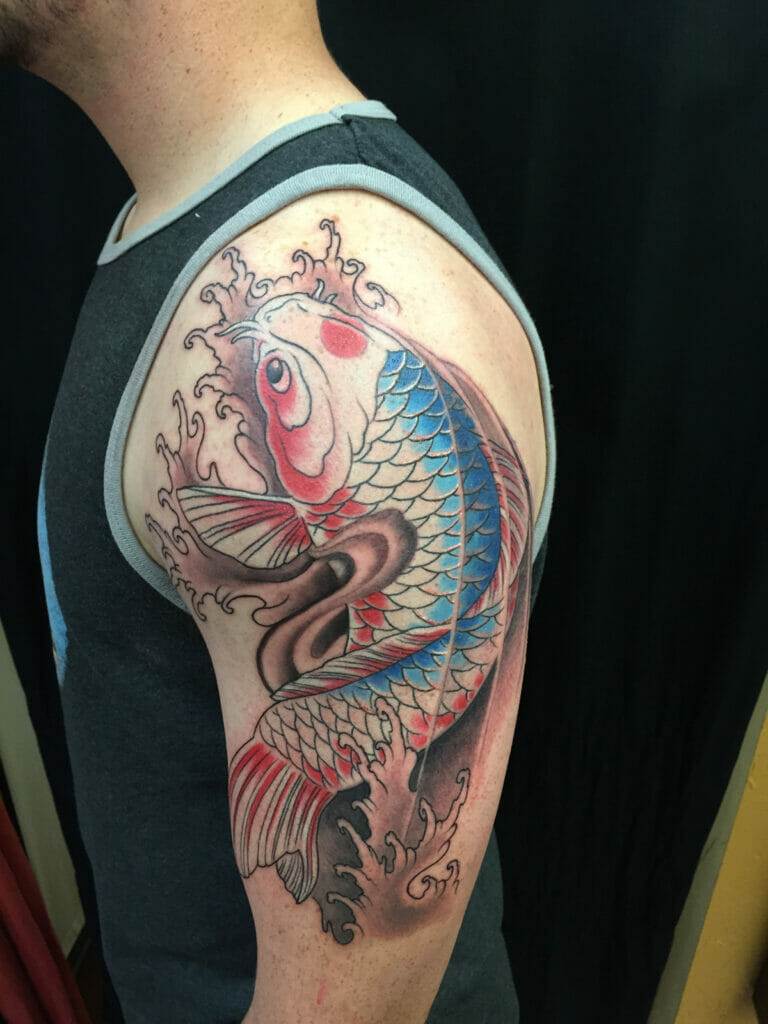
Japanese tattoos have a rich history and cultural significance that dates back thousands of years. From ancient times to the modern era, Japanese tattoos have evolved and transformed, reflecting the changing attitudes and beliefs of Japanese society. These tattoos are not just a form of body art, but also a means of self-expression, storytelling, and cultural preservation. In this article, we will explore the history, symbolism, and impact of Japanese tattoos, as well as their role in contemporary Japan and global tattoo culture.
The History of Japanese Tattoos: From Ancient Times to Modern Day
Tattooing in Japan has its roots in ancient times, with evidence of tattooed bodies dating back to the Jomon period (10,000 BCE – 300 BCE). These early tattoos were simple designs made by puncturing the skin with sharp objects and rubbing ink into the wounds. They were believed to have been used for spiritual and protective purposes.
The influence of Chinese and Ainu tattooing traditions can also be seen in the history of Japanese tattoos. Chinese travelers brought tattooing techniques to Japan during the Yayoi period (300 BCE – 300 CE), and the Ainu people, who are indigenous to northern Japan, had their own tattooing traditions that were later adopted by the Japanese.
Tattooing in Japan reached its peak during the Edo period (1603-1868), when it became popular among commoners as well as samurai warriors. However, in 1872, the Japanese government banned tattooing due to its association with criminal activity. This led to a decline in popularity and a loss of traditional tattooing techniques.
In recent decades, there has been a revival of Japanese tattooing, thanks to the efforts of dedicated artists and enthusiasts. Today, Japanese tattoos are highly sought after by people from all over the world who appreciate their beauty, craftsmanship, and cultural significance.
The Symbolism and Meaning Behind Traditional Japanese Tattoo Designs
Traditional Japanese tattoo designs are rich in symbolism and meaning. They often feature motifs such as dragons, koi fish, cherry blossoms, and geisha. These designs are not chosen randomly, but rather have specific cultural and spiritual significance.
Dragons, for example, are a common motif in Japanese tattoos and are believed to represent strength, wisdom, and good fortune. Koi fish symbolize perseverance and determination, as they are known for their ability to swim upstream against strong currents. Cherry blossoms, on the other hand, represent the transient nature of life and the beauty of impermanence.
The placement and size of Japanese tattoos also hold significance. Full-body tattoos, known as bodysuits or irezumi, were traditionally worn by members of the yakuza (Japanese organized crime syndicates) as a sign of loyalty and identity. These tattoos often covered the entire body from neck to toe and required years of dedication to complete.
The Role of Japanese Tattoos in Yakuza and Criminal Organizations
Japanese tattoos have long been associated with criminal activity in Japan, particularly with the yakuza. The yakuza are notorious for their full-body tattoos, which serve as a form of identification and loyalty within the organization.
In the past, yakuza members would undergo painful and lengthy tattooing sessions to earn their place within the organization. These tattoos were seen as a mark of commitment and were used to intimidate rivals and display power.
However, in recent years, there has been a decline in the number of yakuza members with visible tattoos due to increased scrutiny from law enforcement and changing attitudes towards tattoos in Japanese society. Anti-tattoo laws have made it difficult for yakuza members to openly display their tattoos without facing discrimination or legal consequences.
The Evolution of Japanese Tattoo Art: Contemporary Styles and Techniques
While traditional Japanese tattooing techniques and designs are still highly respected and sought after, there has been an evolution in Japanese tattoo art in recent years. Western tattooing styles and techniques have influenced Japanese artists, leading to the emergence of new styles and approaches.
Contemporary Japanese tattoo artists often incorporate elements of realism, color, and shading into their designs, while still maintaining the traditional motifs and symbolism. This fusion of traditional and contemporary elements has resulted in a unique and dynamic style that is highly regarded in the global tattoo community.
The Cultural Significance of Japanese Tattooing in Contemporary Japan

In contemporary Japan, attitudes towards tattoos have become more accepting, especially among younger generations. While tattoos are still associated with criminal activity by some, many people now view them as a form of self-expression and personal style.
Tattoos have also become increasingly popular in Japanese fashion and pop culture. Many celebrities and influencers proudly display their tattoos, helping to break down the stigma surrounding body art. Tattoo conventions and exhibitions are also held regularly in Japan, showcasing the work of talented artists from around the world.
Despite these positive changes, there are still challenges facing the preservation of traditional Japanese tattooing practices. The decline in skilled tattoo artists and the lack of apprenticeships threaten to erode this ancient art form. Efforts are being made to preserve traditional techniques and pass them on to future generations, but it remains to be seen how successful these efforts will be.
The Influence of Japanese Tattoos on Global Tattoo Culture
Japanese tattooing styles and techniques have had a significant impact on global tattoo culture. The intricate designs, bold colors, and attention to detail have captivated tattoo enthusiasts from all over the world.
Japanese tattoo artists are highly respected and sought after, with many traveling internationally to showcase their skills at conventions and guest spots in renowned studios. The popularity of Japanese tattoos has led to a greater appreciation for Asian-inspired designs and motifs in Western tattoo culture.
However, there is also a dark side to the influence of Japanese tattoos on global tattoo culture. The appropriation and misinterpretation of Japanese tattooing traditions by non-Japanese artists and enthusiasts can be seen as disrespectful and insensitive. It is important to approach Japanese tattooing with respect and understanding, and to educate oneself about its cultural significance before getting a Japanese-inspired tattoo.
The Controversy Surrounding Japanese Tattoos: Cultural Appropriation and Misunderstanding
The debate over cultural appropriation in Western tattooing is a complex and contentious issue. While some argue that cultural exchange and appreciation are positive, others believe that the misappropriation of cultural symbols and practices can be harmful and disrespectful.
Japanese tattoos, in particular, have been subject to misappropriation and misunderstanding in the West. Many people get Japanese-inspired tattoos without fully understanding their cultural significance or the history behind them. This can lead to the dilution and distortion of traditional designs, as well as the perpetuation of stereotypes.
It is crucial for those interested in Japanese tattoos to approach them with respect and sensitivity. Educating oneself about the cultural significance of these tattoos, seeking out reputable artists who specialize in Japanese tattooing, and engaging in meaningful conversations about cultural appropriation are all important steps towards fostering understanding and appreciation.
The Rituals and Practices of Japanese Tattooing: From Irezumi to Horimono
Traditional Japanese tattooing, known as irezumi, is a highly ritualized process that involves both the artist and the client. The relationship between the two is based on trust, respect, and mutual understanding.
The tools used in traditional Japanese tattooing include a wooden handle with multiple needles attached, known as a tebori, as well as ink made from natural materials such as charcoal or plant extracts. The tebori technique involves hand-poking the ink into the skin, resulting in a distinctive texture and appearance.
The tattooing process itself is seen as a spiritual and transformative experience. It requires patience, endurance, and a willingness to endure pain. The client and the artist often engage in conversation during the tattooing sessions, creating a bond and a sense of shared experience.
Horimono is another form of traditional Japanese tattooing that involves larger, more intricate designs. These tattoos are often done on the back, chest, or arms and can take years to complete. Horimono tattoos are seen as a form of spiritual protection and are believed to bring good fortune and ward off evil spirits.
The Impact of Japanese Tattooing on Fashion, Art, and Pop Culture
Japanese tattooing has had a significant impact on fashion, art, and pop culture. The bold designs, vibrant colors, and intricate details of Japanese tattoos have inspired fashion designers, streetwear brands, and artists around the world.
Japanese tattoo motifs can be seen in clothing, accessories, and even footwear. Traditional Japanese tattoo designs have been reimagined and incorporated into contemporary fashion trends, creating a fusion of old and new.
In the art world, Japanese tattooing has influenced artists working in various mediums. Many contemporary artists draw inspiration from traditional Japanese tattoo designs, incorporating them into their paintings, sculptures, and installations.
Japanese tattooing has also made its mark on popular media and entertainment. Movies, television shows, and video games often feature characters with Japanese-inspired tattoos, further cementing their place in popular culture.
The Future of Japanese Tattoos: Preservation, Innovation, and Cultural Identity
The future of Japanese tattoos is both promising and uncertain. While there is a growing appreciation for traditional Japanese tattooing practices and designs, there are also challenges that threaten their preservation.
The decline in skilled tattoo artists and the lack of apprenticeships pose a significant threat to the future of traditional Japanese tattooing. Without a new generation of artists to carry on these ancient techniques, there is a risk that this art form will be lost.
However, there is also potential for innovation and evolution in Japanese tattooing. As new artists emerge and experiment with different styles and techniques, there is an opportunity to push the boundaries of what is considered traditional and create new forms of Japanese tattoo art.
Ultimately, the future of Japanese tattoos will depend on the efforts of artists, enthusiasts, and cultural institutions to preserve and promote this ancient art form. It is crucial to maintain cultural identity and respect while also embracing innovation and evolution.
Japanese tattoos have a long and storied history that is deeply intertwined with Japanese culture and identity. From their ancient origins to their modern-day revival, Japanese tattoos have evolved and transformed, reflecting the changing attitudes and beliefs of Japanese society.
The symbolism and meaning behind traditional Japanese tattoo designs are rich and complex, reflecting cultural and spiritual beliefs. The association of tattoos with criminal activity in Japan, particularly within the yakuza, has added another layer of significance to Japanese tattoos.
Japanese tattooing has had a profound impact on global tattoo culture, inspiring artists and enthusiasts around the world. However, it is important to approach Japanese tattooing with respect and understanding, as the misappropriation and misunderstanding of these traditions can be harmful.
The rituals and practices of Japanese tattooing are deeply rooted in tradition and spirituality. The relationship between artist and client is based on trust, respect, and mutual understanding.
Japanese tattooing has also made its mark on fashion, art, and pop culture. The influence of Japanese tattoos can be seen in clothing, accessories, contemporary art, movies, television shows, and video games.
The future of Japanese tattoos is both promising and uncertain. While there are challenges facing the preservation of traditional techniques, there is also potential for innovation and evolution. It is crucial to maintain cultural identity and respect while also embracing new forms of expression.
In conclusion, Japanese tattoos continue to captivate and inspire people from all over the world. Their history, symbolism, and impact make them a unique and important part of contemporary culture. By understanding and appreciating the cultural significance of Japanese tattoos, we can ensure their preservation and celebrate their ongoing influence.
If you’re interested in the art of tattooing, you might also enjoy reading about the healing process of a tattoo. Funhouse Redemption Ink provides a comprehensive guide on what to expect during the healing process, including tips for proper aftercare. Understanding how tattoos heal can help ensure that your new ink looks its best and lasts for years to come. Check out the article here.

